I wrote earlier this week about our brief visit to the UK, and how I felt less like a tourist seeing sights and more like a pilgrim giving thanks, on a quest to devote time and effort to a couple of men whose gifts have blessed me: C. S. Lewis and G. K. Chesterton. I’ve already written about our visit to Beaconsfield to see the home and grave of Chesterton. Today, the journey continues with our visit to The Eagle and Child, the Kilns, and the grave of C. S. Lewis.
The Inklings’ Haunt
As we left the library of a church in Oxford, we walked down the road toward The Eagle and Child, the famous pub where some of the greatest lights in English literature in the past century were known to dine. As soon as you enter, you are immediately struck by the small size of this pub. It is cramped yet cozy, as if the walls are heavy with its sense of history and yet lightened with the levity of its relaxed atmosphere. A surreal juxtaposition of seriousness and joy.
Our family had a hearty meal here, just down the hall from the Rabbit Room, the famous place where Lewis, Tolkien, Owen Barfield, Charles Williams, and others gathered around the stove and presented their recent writing, fully expecting the rest of the group to shower them with comments, praise, criticizing, or a good, old-fashioned skewering.
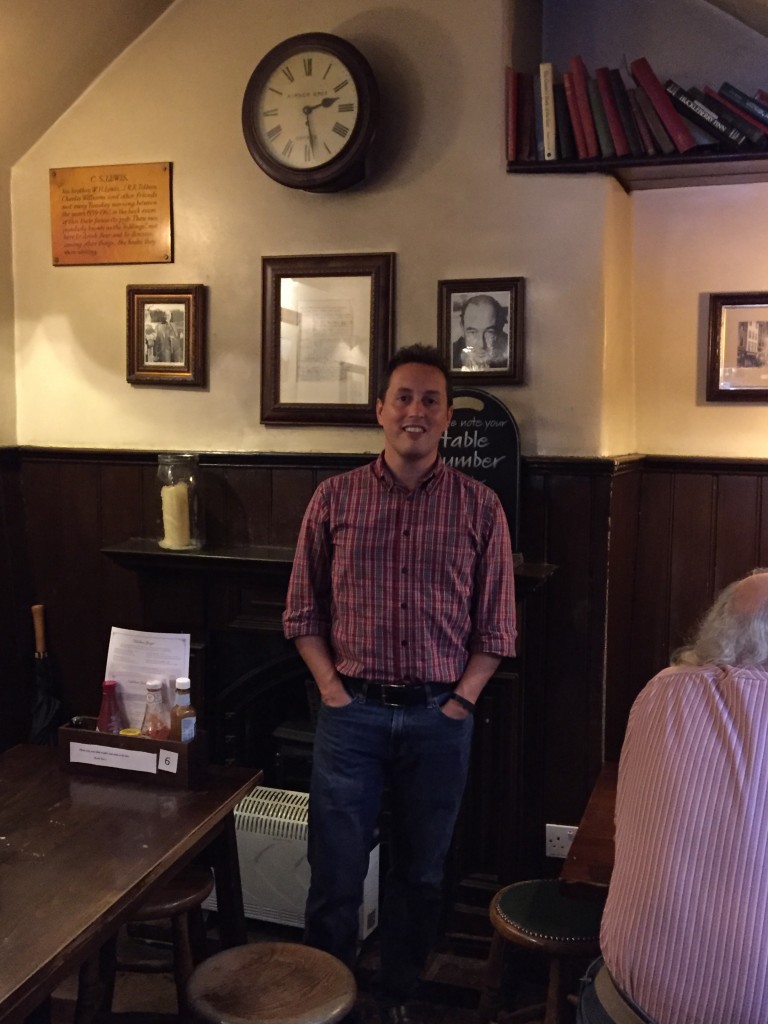
If you want to read an excellent book on the Inklings, start with Philip and Carol Zaleski’s recent tome, which delivers on its promise to trace the literary lives of the four primary members of this writing group. It’s stunning, really, just how much creativity burst from these conversations, the often-heated debates, and raucous laughter. The Inklings helped shape two of the greatest mythological worlds of our time: Middle Earth and Narnia.
I have always preferred Lewis’s world to Tolkien’s, even though I am in awe at the level of detail in the mythologies and languages that Tolkien created, to the point I recognize that Middle Earth is the more significant literary achievement. But Narnia has always been my first love as a fantasy world, ever since I was a child. Even today, whenever I spot a wardrobe, or a bench in a busy train station, or an old fashioned lamp post, I can’t keep my mind from flying away to the world where Aslan reigns.
The Kilns
I do not recommend you do what we did next. We drove out of Oxford and toward The Kilns, the home of C. S. Lewis from 1930 until his death in 1963. The Kilns is a study center nowadays, and yes, you are supposed to call and reserve a tour time, not just show up. But we only had a few hours to spend in the Oxford area, so we thought we’d at least drive by the house, even if we couldn’t go inside.
When we arrived, I walked around to the front door.
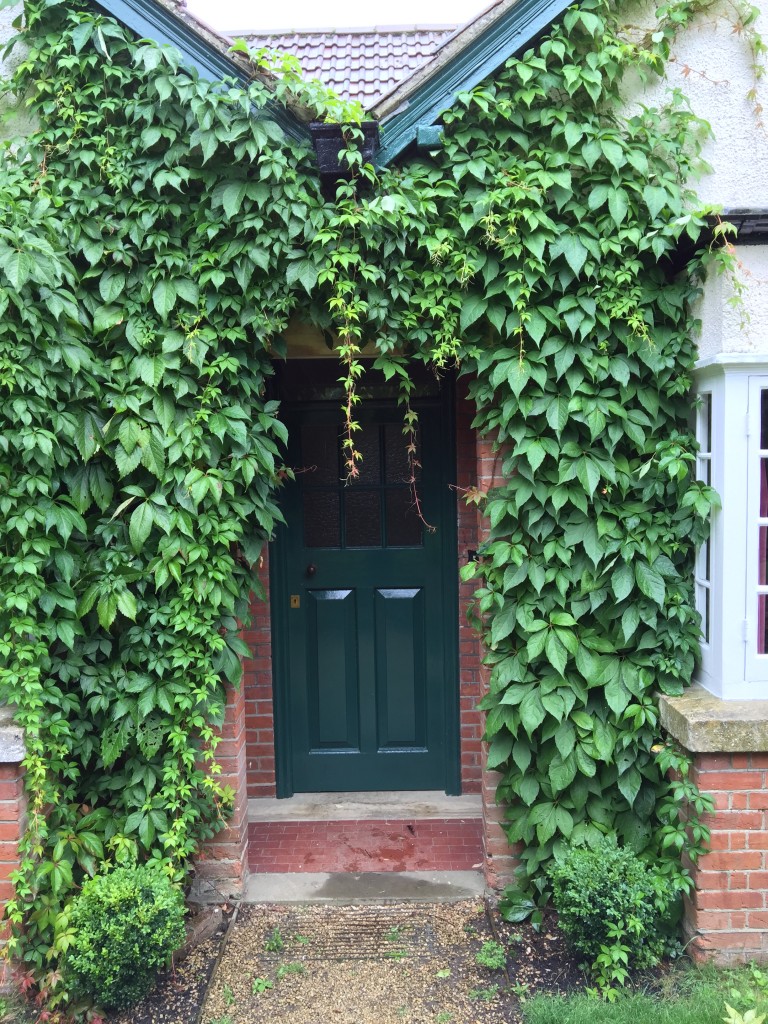
I noticed through the window two men in the front room. They acknowledged me and one of them came to the door. I never would have guessed that the stepson of C. S. Lewis would be the one to open the front door of the Kilns to me, but that’s exactly what happened. “I am a guest here as well, although I used to live here,” he told me.
Douglas was taking a break from being interviewed for a documentary about his life, and he welcomed me inside, where I was able to peek in the downstairs rooms and then take a few pictures in the garden. The warden was unavailable, but Douglas encouraged us to come back in a few hours when we could have a full tour of the premises. We were satisfied however in spending a little time in the garden and taking a few pictures. We’ll save the full tour for a future visit!

Holy Trinity Church
As we finished up at The Kilns, we drove down a few streets to Holy Trinity Church, where we walked over to the grave of C. S. Lewis.
Standing near the grave, my oldest son, himself a Narnia fan, commented on how modest the gravestone was. He didn’t think it reflected the fame or significance of such a great man. But that’s one of the truths about death, isn’t it? It levels us all.
We stood over the grave in silence, filled with gratitude for this man’s life, aware of how death extends its cursed claws and steals life from the earth, but also hopeful in the victorious voice of a resurrected Savior who will bring forth life once again from these deathly grounds.
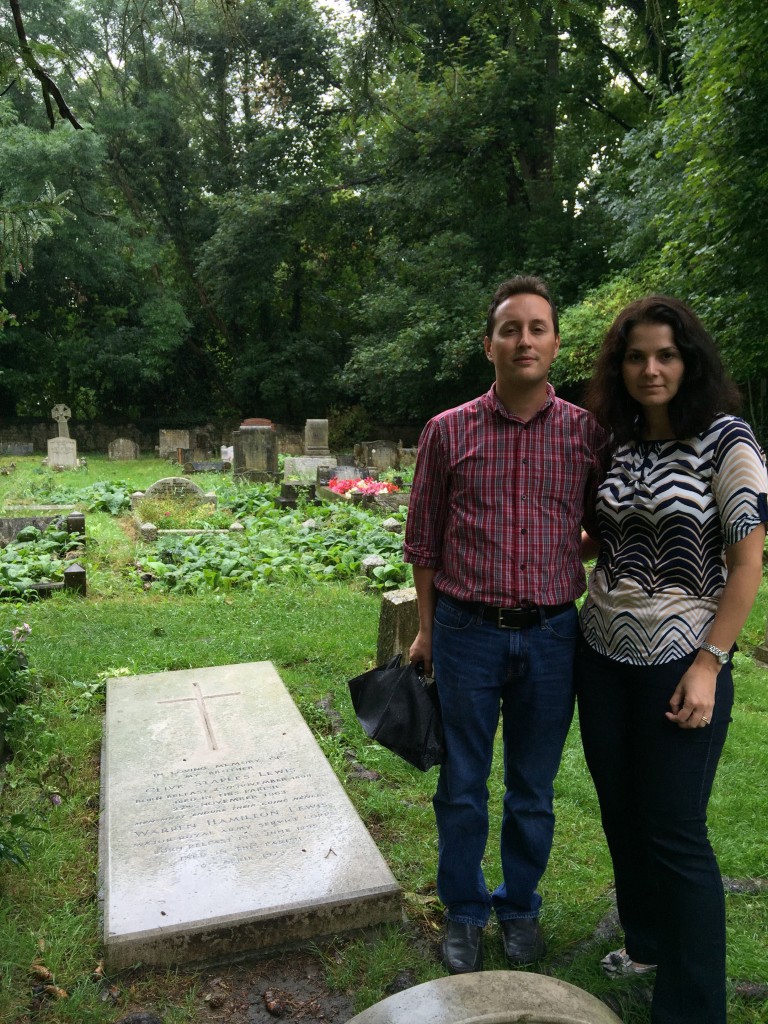
Next, we spent a few moments inside Holy Trinity Church where Lewis and his brother, Warnie, worshiped for decades. The warden of the church answered a few of our questions and made sure we saw the Narnia window.
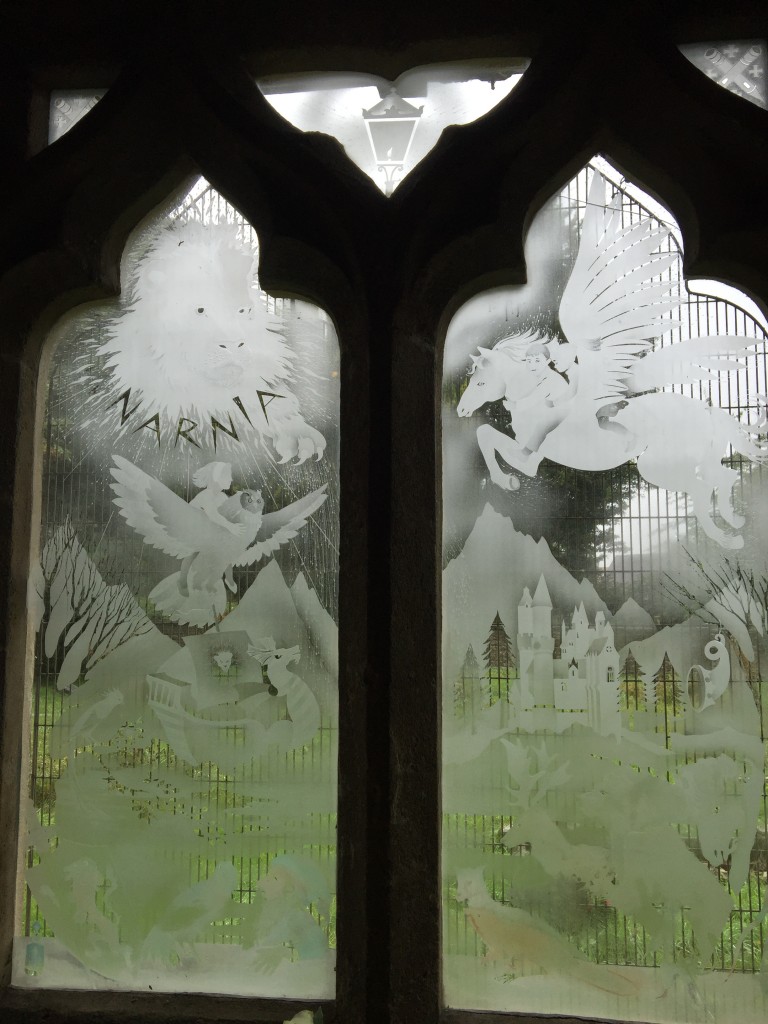
We were encouraged to sit in the pew where Lewis sat every week. When you think of the scholarship and literary legacy of men like Lewis, you sometimes forget to see them as churchmen—not pastors or church leaders, but laypeople who served God’s people and worshiped alongside their neighbors. Both Lewis and Chesterton are buried in churchyards. The gift they gave the world has most benefited the church, and in the end, the churches retain their earthly remains.
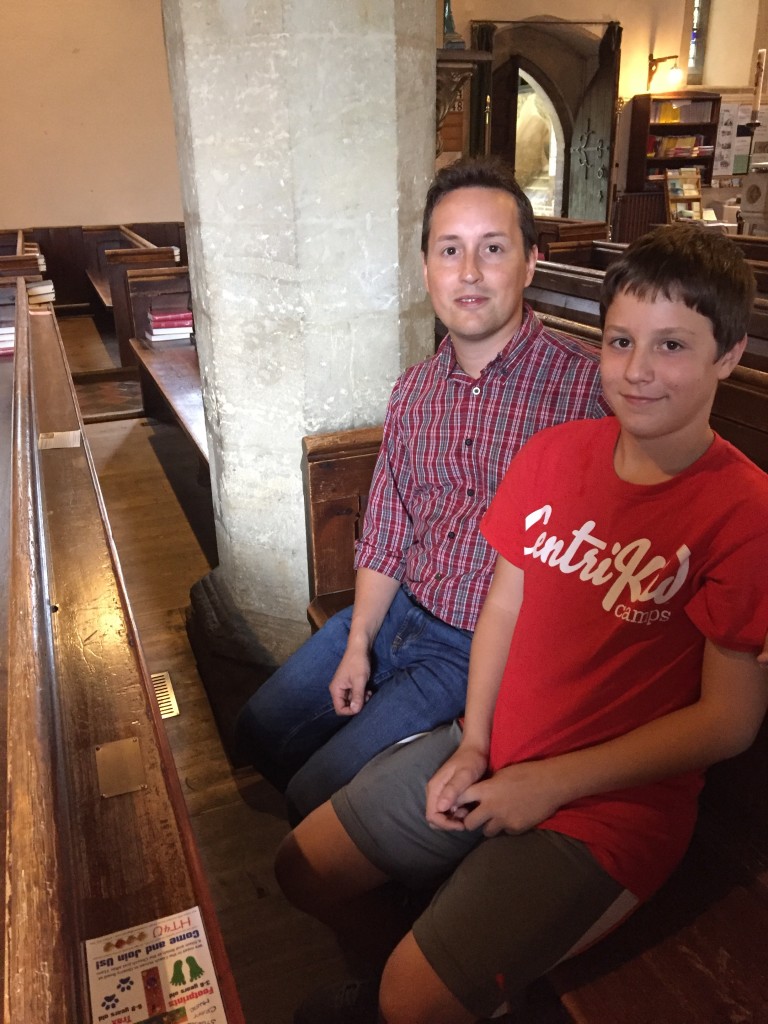
There is so much more I could write about our trip to England. At some point, I’d like to compare two ancient churches we visited (and a castle). But that will need to wait for another day. Back to regular blog posting next week!


















